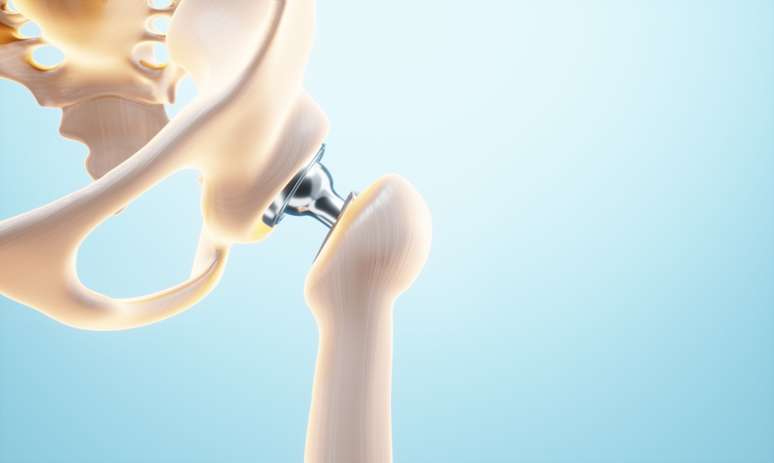Hip prosthesis is the therapeutic alternative for patients with advanced osteoarthritis of the joint. Understand the surgery
When hip osteoarthritis does not receive adequate treatment, it progressively damages other joints, such as the spine. The most common alternative in these cases is hip replacement, an operation that raises many doubts about its indication, as well as the procedure.
What is a hip replacement like?
According to Isaías Chaves, an orthopedic and knee specialist, there are different types of hip prostheses. The most commonly used today is the complete prosthesis. It has 4 basic components, including a metal component that replaces the acetabulum of the hip.
“It is covered internally with a coating which can be plastic or ceramic. This will be articulated with a prosthetic femoral head most commonly made of ceramic. This head, in turn, connects to a metal component which will be fixed to the inside of the femur This forms a new hip joint,” explains the doctor.
Basically, the surgery boils down to the removal of the diseased and dysfunctional joint, with the implantation of a new joint in its place that restores mobility and functionality. Furthermore, it eliminates the patient’s pain.
“In March 2007, the renowned scientific journal “The Lancet” published an article describing hip replacement as the surgical intervention of the century due to its excellent postoperative results,” the specialist emphasizes.
Recommendation
The prosthesis is indicated for the treatment of hip arthrosis with functional limitations and pain. With the advent of ceramics and the longer life of prostheses (more than 20 years), age is no longer a limiting factor for the patient to undergo surgery.
Isaias reminds us that hip arthrosis limits the patient’s mobility, overloads the other joints, strongly affecting the patient’s quality of life, generating pain in the hip and other joints.
“Young patients may have limitations in physical activities, simple habits, wearing high heels or even sexual intercourse. In general, hip arthritis limits the patient’s life,” he emphasizes.
Postoperative mobility
With the evolution of prostheses and the techniques used to implant them, the limitations of mobility in the postoperative period are becoming less and less, emphasizes Isaías. The doctor recalls that we currently have patients with prostheses who practice agility and impact sports at a professional level.
“English tennis player Andy Murray is an example of a top-level athlete, with professional performances and a hip replacement. If in the past this was indicated only for the treatment of pain in the elderly, today it is performed at all ages with the aim of restoring the quality of life of patients,” he says.
According to the doctor, patients operated with appropriate techniques and materials return to a normal life. Furthermore, it is common for patients to report that after a few years they no longer remember having a prosthesis.
“With a satisfaction rate close to 100% among patients, hip replacement is a surgery that can bring patients back to life. Additionally, many patients who are depressed due to pain and limitations improve after returning to life normal with the implantation of the hip prosthesis, “concludes the orthopedist.
Source: Terra
Ben Stock is a lifestyle journalist and author at Gossipify. He writes about topics such as health, wellness, travel, food and home decor. He provides practical advice and inspiration to improve well-being, keeps readers up to date with latest lifestyle news and trends, known for his engaging writing style, in-depth analysis and unique perspectives.







